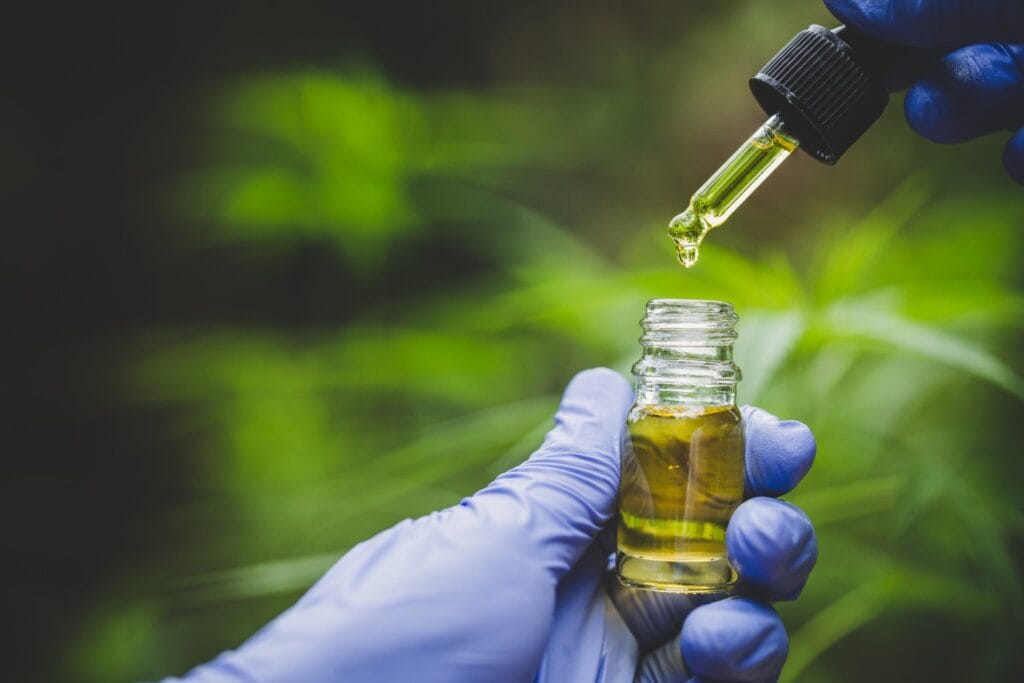The cannabis plant, commonly known as marijuana, is well-known for its diverse strains with unique effects and benefits. Within cannabis culture, people distinguish between Sativa and Indica strains.
This difference doesn’t match how researchers differentiate strains. Scientific evidence shows that cultivation conditions and genetics determine cannabis’s chemical composition and effects. These distinctions can be important for those looking to buy Indica weed or Sativa strains.
Table of Contents

Indica and Sativa Labels in Cannabis Culture
People have used cannabis for medical and recreational purposes for millennia, but the classification of its species remains a topic of debate. Some scientists recognize three species:
- Cannabis Sativa strains (hemp type)
- Cannabis Indica strains (drug type)
- Cannabis Ruderalis (wild type)
Sativa and Indica strains are distinguished based on their physical characteristics and effects.
- Indica plants have short, bushy, and wide leaves. Indica flowers are sedating and good for pain relief.
- Sativa plants are tall, loosely branched, and have narrow leaves. The flowers of this plant are uplifting and stimulating and are recommended for daytime use.
Studies disregard the effects that most cannabis connoisseurs claim. Researchers show that both strains effectively relieve symptoms across various conditions, with no difference in their effects on pain, mood, nausea, and other issues. Any observed differences may be due to patient expectations rather than actual effects.
The differences in cannabis effects might be due to compounds like cannabidiol (CBD) and tetrahydrocannabinol (THC) and their interactions, known as the “entourage effect.”
The Findings of Chemical Composition and Genetic Makeup
Natural Products Chemistry & Research uses principal component analysis (PCA) on 494 cannabis flower samples to study cannabinoids and terpenes and identify distinct chemotypes. The study compares the variation in California medicinal marijuana strains by focusing on the differences between Indica and Sativa compositions.
Key Findings:
- Cannabis strains show a continuum of chemical composition rather than distinct chemotypes.
- Sativa and Indica cannabis strains have no significant chemical differences.
- Both Indica and Sativa strains have similar THC and cannabinoid levels – with differences primarily in terpene profiles affecting aroma and minor effects.
- Genetic analysis indicates significant overlap between Indica and Sativa due to hybridization blurring genetic distinctions.
The research suggests that cultivation conditions (soil, climate, and growing techniques) impact THC content and potency more than genetic background. Labels must shift from Indica vs. Sativa to specific cannabinoid and terpene profiles for more accurate predictions of effects.
Another study from the Journal of Phytochemistry claims that environmental factors and genetics affect chemical profiles. Standardized growing conditions lead to consistent levels of terpenes and cannabinoids.
OG vs. Kush
The study also looked into the differences between OG and Kush strains. Varieties with the terms “OG” and “Kush” are due to their high THC potency and strong, pungent odour. These strains are also known for their high levels of terpenoids with alcohol substitutions.
OG strains have higher levels of α-terpineol, fenchol, limonene, camphene, terpinolene, and linalool. Kush strains contain trans-ocimene, guaiol, β-eudesmol, myrcene, and α-pinene. Higher levels of sesquiterpenoid alcohols are characteristic of the Indica strains originating from the Hindu Kush region of Afghanistan and Pakistan.
Indica vs. Sativa: How to Differentiate the Two?
Instead of using traditional methods to tell Indica and Sativa apart, you can identify them by their physical appearance and terpene profiles.
Terpenes
If someone asks whether terpenes promote specific effects in cannabis, the answer is yes. The most accurate way to determine a strain’s effects is by examining its terpene and cannabinoid profile. While psychoactive cannabinoids like THC cause the high, terpenes promote specific effects.
Though you can find identical terpene isolates in various chemovars, each has a unique blend of terpenes. This is why some of your favourite chemovars cause “couch-lock” while others make you want to socialize.
A 2011 study examined terpene profiles in 16 different strains of Cannabis sativa L., categorized as ‘mostly indica’ or ‘mostly sativa’ based on their appearance. They found significant terpene variation between strains. They suggested using this to characterize cannabis types.
- ‘Mostly indica’ strains had β-myrcene dominance, with limonene or α-pinene as secondary terpenes. Myrcene has a musky, earthy aroma and is helpful for anxiety and insomnia due to its sedative effects.
- ‘Mostly sativa’ strains had more complex profiles, with α-terpinolene or α-pinene dominance or β-myrcene with α-terpinolene or trans-β-ocimene as secondary. The terpinolene and THC combination acts as a creativity booster. It creates a lively, energetic effect that fuels excitement and sparks the imagination.
Plant Appearance
| Aspect | Indica | Sativa |
| Origin | Afghanistan, India, Pakistan | South America, Thailand |
| Leaf Shape | Wide, compact clusters | Thin leaves spread apart |
| Plant Appearance | Stout and bushy | Tall |
| Average Plant Height | 3-6 feet | 15-20 feet |
| Maturity | 6-8 weeks | 10-16 weeks |
Buy Indica Online For a Soothing Feeling
For those seeking quality Indica weed strains, purchase from an online dispensary. GrassLife offers convenience and a wide selection. Depending on the plant type, terpene profile, or desired effects, you can choose the following:
| Aspect | Bubba Kush | Snow Leopard | Papaya Punch | Purple Dragon |
| Flavours | Vanilla, Apple | Spicy, Woody | Cheese, Fruity | Grape, Sweet |
| THC | 22% | 24% | 22% | 19.5% |
| CBD | 0.6% | 0.2% | 0.217% | 0.5% |
| Plant Origin | Possible Northern Lights genetics, rooted in California. | Mixed genetics with Haze, Afghani, Thai, and Mexican influences. | Papaya with Purple Punch | Purple Urkle and Blue Dragon |
| Plant Appearance | Stocky stature, bulky bud structure, forest green to pale purple hues. | Coated in a thick layer of trichomes that resemble snowflakes. With green, purple or blue colour. | The leaves are long and thin, bright green. The buds feature orange hairs and a purple tint. | Medium-sized buds, mossy green leaves, and bright orange pistils. |
| Terpenes | Caryophyllene, Limonene, Humulene | Myrcene | Caryophyllene and Linalool | Caryophyllene |

Buy Indica Weed – Perfect Blend of Buzz and Relaxation
The traditional labels of Indica and Sativa in cannabis culture have long guided consumers in selecting their preferred strains. Recent scientific findings suggest these labels are less distinct than once believed. The chemical and genetic makeup of cannabis strains shows significant overlap – indicating that cultivation conditions influence THC content and overall effects.
You can still rely on these labels, but be flexible about what to expect. Be open to whether a Sativa strain may produce sedative effects or an Indica strain can help you focus.
Want to buy Indica weed online? Discover a premium selection of Indica strains at GrassLife. With our focus on the highest quality cannabis, you can expect a body high from the potent THC levels and unique effects of each Indica strain.
Frequently Asked Questions
How do you choose the right strain?
- Medical Use. Many people associate specific strains with standard effects and benefits. For example, an Indica strain is suitable for managing chronic pain, anxiety, and sleep problems. Its calming effects can relieve physical discomfort and promote deep relaxation.
- Recreational Use. The energizing high of certain strains is what most associate with recreational use. Sativa strains can stimulate and provide a euphoric experience. They can enhance mood and boost energy.
- Cannabinoid Content. THC and CBD are the two most common cannabinoids in the cannabis plant. High THC can lead to psychoactive effects, while CBD provides medical symptom relief.
- Terpenes Profile. These compounds can contribute to the overall effect of a flower. When looking for a strain, check the terpene profile and how it can enhance the medical benefit of the cannabinoid you prefer.
Does high THC composition mean a potent experience?
Blood tests of people using high THC will show high THC levels, but the feeling of intoxication can be similar even with moderate THC levels.
The level of intoxication can vary based on the user’s experience. An experienced user may not feel strong effects from high THC, while a beginner may experience more intense psychoactive effects.
What is the best way to identify the exact effect of a cannabis strain?
There’s no single way to identify the exact effect of a cannabis strain when you buy it online or from a physical store. Your options may be:
- Ask the dispensary about the strain’s chemical composition.
- Look at reviews left by other users to gauge the overall effect of the strain.
- Use a trial-and-error process to determine if a strain suits you best.
What factors affect the THC component of a cannabis flower?
- Harvest time. Cultivars might reach their peak potency before they are fully mature. If you harvest plants too late, their potency can decrease because it can lead to the degradation of Tetrahydrocannabinolic acid (THCA) into cannabinol (CBN).
- Flower Position. Flower higher up in the canopy, which receive more light, tend to have higher THC levels.
- Nutrient Management. Proper nutrient management during the vegetative and flowering stages is optimal for cannabinoid production. By providing a balanced mix of macronutrients and micronutrients, you support healthy plant growth and boost cannabinoid synthesis.
- Genetics. Genetics determine your cultivar’s secondary metabolite production profile. The synthesis of THCA, controlled by the plant’s genes, governs the potential THC levels.
Related Articles:



